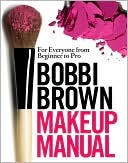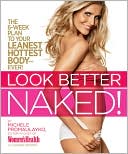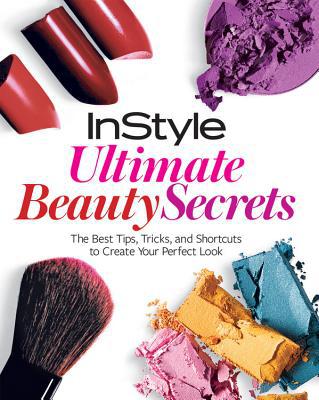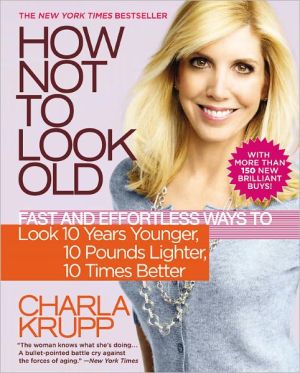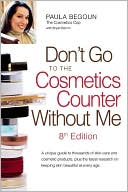Smile!: The Ultimate Guide to Achieving Smile Beauty
Renowned dentist and creator of the GoSMILE product line Dr. Levine offers this complete guide to getting a whiter, brighter smile. 15 photos & illustrations.
Search in google:
A perfect smile is the latest, hottest, must-have accessory. It's bright, it's white, and just flashing it makes anyone feel like a celebrity. And now, it's easier to get than ever before. With over 20 years of experience, Jonathan Levine, creator of GoSMILE and aesthetic dentist to the stars, offers readers a groundbreaking program to help improve and care for their smiles. Complete with home tips, guidance on how to find the right dentist, nutritional advice, the psychology behind the right smile, and much more, readers will have more reason than ever to flash their smile!
Smile!\ The Ultimate Guide to Achieving Smile Beauty \ \ By Jonathan B. Levine Jane Larkworthy \ Warner Books\ Jonathan B. Levine, DMD\ All right reserved.\ ISBN: 0-446-69427-4 \ \ \ Introduction\ WHAT'S IN A SMILE? \ Smiling: The art of speaking ... without saying a word.\ "Smile at life, and life will smile at you." -William Shakespeare\ There's a reason why the smile is the universal language. The original form of instant messaging, a smile is ageless and it never goes out of style.\ In the past few years, the smile has taken center stage as the ultimate symbol of beauty-more than beautiful eyes, more than great hair, even more than a sexy body. A brilliant smile has become the determinant in describing both beauty and personality. Think about it: You never hear someone say, "She's got such a great smile," when they're describing an aloof or rude woman. Rather, such appraisal evokes admiration, even envy. She is someone you'd like to model yourself after.\ A smile is one of the greatest gifts you can give somebody. Equally, it's one of the greatest gifts to receive. Wouldn't life be better if we all smiled more? Smiling is also one of the most natural movements a body makes. We were all born with the ability to smile. In the very first few weeks of infancy, babies automatically begin smiling on their own. Within two months, they're usually starting to recognize when others are smiling at them, and, bythis time, they're reciprocating in kind. Who needs their baby to figure out how to roll over when he's tossing a fresh, innocent, gleeful smile back to you? Here's a sad statistic about growing up: Babies smile an average of two hundred times a day; the average woman smiles sixty-two times a day. The average man smiles only eight.\ FACT\ It takes nearly three times the number of muscles to frown as it does to smile. Frowning requires forty-three, while smiling asks only seventeen to help out. Stop working so hard!\ SMILING MAKES YOU BEAUTIFUL\ Think of people whose smiles you admire. Watch how they tilt their head or engage their eyes a bit when they do it. These are not conscious additions; they are natural characteristics that come about individually when someone smiles. Smiles create other natural characteristics as well-beautiful ones that form from years of, well, happiness-like that little crinkle in the nose, the creases around the eyes, and the aptly named smile lines. These are part of a great natural smile; you should have them. Mark Twain put it best: "Wrinkles should merely indicate where smiles have been."\ Scientific studies have shown that people actually respond more to the act of someone's smile than to how perfect or white that smile is. There is a message of affability in a smile. It says, "Feel free to approach me. I'm interested in what you have to say." There's a lost opportunity when you feel that your smile doesn't have those implications. You're missing out on great things, from meeting interesting people to the basic pleasures of enjoyment.\ SMILING MAKES FRIENDS AND INFLUENCES PEOPLE\ A strong smile has power. It increases the production of serotonin, which has been scientifically proven to elevate the mood of both the person giving the smile and the person receiving it. A full, genuine smile automatically exudes confidence. It's a widely held belief that people with great smiles are more self-assured. According to the Smarter Smile Survey (conducted by Harris Interactive for Align Technology, October 2000), 64 percent agree that people with nice smiles are more outgoing. Eighty-seven percent think that your smile is very important to your self-esteem. You can't ignore the general consensus. Every element of the smile is connected to confidence. Roughly six in ten adults believe that if they had a whiter smile, it would boost their selfconfidence, according to a study sponsored by Orbit chewing gum. The study also found that 71 percent believe people with nice smiles make friends far more easily than those with crooked teeth.\ The smile has a profound effect not only on our perception of someone's attractiveness, but on what we think about that person as well. A great smile is associated with good health and is sometimes even a barometer of wealth. Someone with noticeably flawed teeth is usually presumed to be suffering financially. In contrast, studies have shown that a white, aligned smile signals that someone is healthy, smart, and financially secure. You'll find evidence of this simply by digging up your high school or college yearbook. Check out the students with the big, confident grins. Studies have proven that students with the big, broad, and gleaming smiles are more likely to have had successful careers and solid marriages than their poker-faced peers.\ "Facial expressions are critically important in all ways of how we communicate. It's what we see first, what we respond to first, and, right or wrong, it's what we base our first impressions on," says clinical psychologist Sylvia Welsh, PhD. "So if you have a warm smile, you're likely to evoke warmth in others. What you put out is what you get back. If you're uncomfortable with your smile, it will affect everything in your life. People won't respond to you as much as you'd like them to. You might even be inadvertently creating a hostile environment. Depression is something people actually try to stay away from, whereas happiness conveys something much more contagious."\ A SMILE CAN MAKE YOU YOUNGER\ Smiles are also associated with youth. So why do so many people attempt to forestall the aging process by suffering through face-lifts, chemical peels, and microliposuction when an aesthetic dentist can fix an aging smile?\ Doing nothing more than readjusting what's inside your mouth can take ten years off your face.\ As we age, our teeth shorten, creating dark silhouettes, which are referred to as negative space. By lengthening those teeth, they become visible again when you're speaking and even when your lips are in a relaxed smile position. This regained tooth exposure translates to a more youthful face overall. Another consequence of aging teeth is yellowing. An in-office whitening treatment and/or the right over-the-counter whitener can restore that youthful whiteness. New technology has made these kinds of problems very easy to fix, and many of my patients have forgone the knife, laser, and needle in favor of changing their smile.\ TRANSFORM YOUR SMILE\ Back in the 1950s, more than half of the adult population over the age of sixty-five had lost all of their natural teeth. This decade, only a third of that group is in the same predicament. In 1960, Americans over sixtyfive had an average of only seven of their original teeth. Today that number has risen to an average of twenty-four.\ It also wasn't so long ago that people who didn't have a flawed smile were the rare exception. As recently as the early 1990s, a flawless smile was expected only from movie stars and beauty queens.\ But that's all changed. Somewhere in the past decade or two, the way a smile looks has become almost as important as how well it works. Sure, we rely on our teeth to perform their intended functions, such as helping us chew and speak, and supporting the face's structure. But function alone isn't enough anymore. If a smile is unevenly aligned or has a gray or yellow cast, it's not enough for most of us. A smile now needs to look as close to flawless as it can.\ SETTING THE STAGE\ Think of your smile as a stage set for a play. The lips are the curtains, and the front teeth are the main characters. As the lips part, the curtain is rising, and the actors should be in their proper position, set to give the stage balance and harmony. Whether your own dentist ever uses this analogy or not, he's thinking of the smile this way. He's thinking of how the lips move in comparison with the teeth. He's thinking of your two front teeth, the central incisors, as the stars and he examines how they're set up against the other supporting actors, your canines-looking to create a balance. It's all about the balance-of the set (your face and mouth), the actors (your teeth), and their placement.\ DENTISTS AREN'T JUST CAVITY FILLERS ANYMORE\ Dental offices aren't the dens of pain that we remember from our childhoods. Instead, dental practices today represent the opportunity for aesthetic improvement. Seventy-seven million baby boomers want to look and feel younger, and major dental care companies such as Procter & Gamble (who make Crest) and Colgate-Palmolive are spending millions on advertising tooth-whitening products and other technological advancements in cosmetic dentistry.\ Smile nuisances can be fixed at any age, so you can start feeling better about yours as soon as you put your mind to it. Once you feel better about your smile, you will, without question, use it more. And so begins the wonderful ripple effect: If you start smiling more, that person who you smiled at now smiles at someone else, and so on and so on. It's like that old Fabergé Organics commercial- tell two friends, and so on. It's a chain reaction. Smile at someone, and they can't help but smile back.\ SMILE ASSESSMENT: GRADE YOUR SMILE\ Find a mirror and take a look at your smile. If you don't love what you see, you're certainly not alone. In fact, only 50 percent of Americans are happy with their smiles. If you fall into that group, you'll get nowhere denying it-perhaps it's time to make a change.\ This book is based on the premise that there is no reason not to love your smile. Your smile could be as magnetic as Julia Roberts's, as lovely as Halle Berry's, as alluring as Scarlett Johansson's. I don't know these actresses' dental histories, but most celebrities with worldfamous grins weren't born with them. We're all human. And we're all entitled to enhance what we were born with.\ STAY TRUE TO YOUR SMILE\ Those celebrity smiles raise another pertinent issue. I can't stress enough how important it is to stay true to your own individual smile. Of course, it's only natural to want it whiter or straighter, but the farther you stray from the smile you were born with, the less your smile will look like it's actually yours. Think about all the bad plastic surgery you see on the street and television every day: The best work is on those who don't look like they've had anything done to them. Smiles are no exception. Dentistry needs to be invisible.\ Take my patient Christie Brinkley. Hers is a hundredwatt model-perfect smile. Her teeth are beautifully aligned, and she's got those two sexy full central incisors leading the way. But put Christie's smile on, say, Natalie Portman and it wouldn't work. Just as people wave pages from magazines in their hairdresser's face demanding Meg's or Jennifer's hair, patients come to me every day begging for Julia's smile. But even imagining any of these celebrities' smiles on another celebrity illustrates how easy it is to miss the point. You shouldn't want someone else's smile. You should want yours, as good as it can be. It's up to you and your dental professional to attain it.\ Now that the smile is quickly becoming the epicenter of beauty, we have begun to care as much now about having a dazzling one as we do about having our abs tight or our skin clear. And while those two latter attributes have always been up there on the list of vanity concerns, a fabulous smile has only recently risen up to the top of the list. Smiles are just one more reflection of vitality and youth.\ With the myriad advancements in dental technology and the vast strides in home care and all that we know about successfully maintaining oral health, anyone can have a great smile.\ This book isn't aimed to help you achieve Christie's or Julia's or Halle's or Tom's smile. It is written to guide you toward the smile you were meant to have. In here, you'll find the answers to every smile dilemma and the solutions to every smile problem. But most important, it will guide you to getting-and keeping-your own smile beauty.\ FINDING THE RIGHT DENTIST FOR YOU\ According to the Mintel consumer intelligence report on oral care, only 68 percent of Americans have visited their dentist in the past year and a half. That number continues to rise as health care benefits improve and patients learn more about both their teeth and the options in dentistry.\ Going to the dentist should not be the anxiety filled experience you may have had as a child, squeezing your eyes shut, gripping the chair with all your might, silently making a pact with God that you'd never eat candy again if just once they didn't find any cavities. You're not a kid anymore. You have a say in whether your dental appointment will be a positive or negative experience. Just follow the steps I've laid out, and both the anxiety- and the pain-will be taken out of the equation.\ STEP ONE: SQUARE ONE\ When it comes to your smile, that part of your body that wins friends and influences people, you don't want to offer it up to just any dentist. Whether you have recently moved and are not familiar with dentists in the area or are not completely satisfied with the care you are currently receiving, the following guidelines will help you find the right one for you.\ Ask for recommendations. Talk to people who've had the kind of dentistry you require. How do you know who to ask? That's easy. Ask anyone whose smile you admire. If they respond, "This is my natural smile!" compliment them, then move on to the next person. You're eventually going to hit someone whose natural-looking smile is not the smile they were born with.\ Call the prosthodontic department of your nearby university's graduate dental school (the prosthodontic department specializes in restorative dentistry and reconstruction of the mouth). Or, if there's an aesthetic program, ask the faculty who's on its recommendation list.\ Make sure the dentist recommended to you doesn't teach more than one to two days a week. A full-time dental academic would be the ideal professor, should you decide to study dentistry, but when it comes to dental work, you want one who's more involved in clinical practice.\ Contact the American Academy of Esthetic Dentistry (estheticacademy.org; 312-321-5121). This is a reputable organization whose members are an esteemed group of professionals.\ Do not call 800-DENTIST or 800-SMILE-GREAT or 800-anything teeth-related: Dentists pay to get on these phone lists. The only ones recommending them are themselves.\ STEP TWO: NARROWING YOUR SEARCH\ Once you get some dentists' names, call their offices and conduct a phone interview with each one. The first checkpoint for clearance depends on the answers they give you. Without exception, ask the following:\ "Does she work with different specialists?" If the receptionist replies, "Oh, she's extremely talented. She does the root canals, oral surgery, perio, even orthodontics," say, "No thank you," and move on to the next name on your list. No dental professional is good at every specialty. You want someone who works with a team of specialists to handle the different divisions of dentistry.\ "And can you tell me some of the names of the specialists she usually works with?" You should absolutely ask this question, then check on the specialists' names as well. Professional football players wouldn't train with-or be in the same league with-a high school team. You get the analogy.\ "Does she have hygienists? Who's doing the cleaning? A hygienist or the dentist?" If the receptionist says that the dentist is doing the cleaning, say, "Thank you" again and hang up again. Cleaning is a hygienist's specialty.\ "How much time will a routine cleaning take?" It should last at least forty-five minutes.\ (Continues...)\ \ \ \ Excerpted from Smile! by Jonathan B. Levine Jane Larkworthy Excerpted by permission.\ All rights reserved. No part of this excerpt may be reproduced or reprinted without permission in writing from the publisher.\ Excerpts are provided by Dial-A-Book Inc. solely for the personal use of visitors to this web site. \ \

